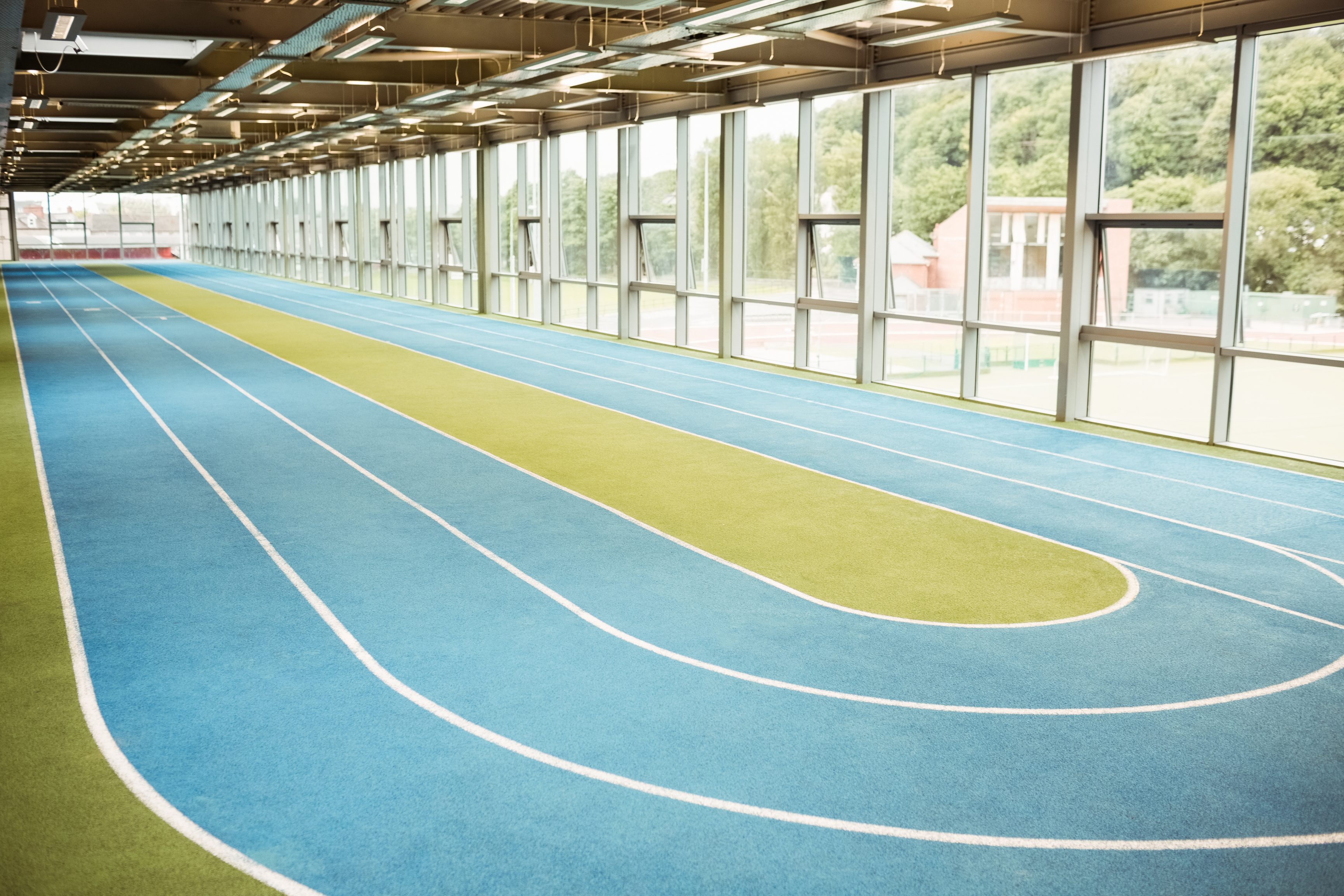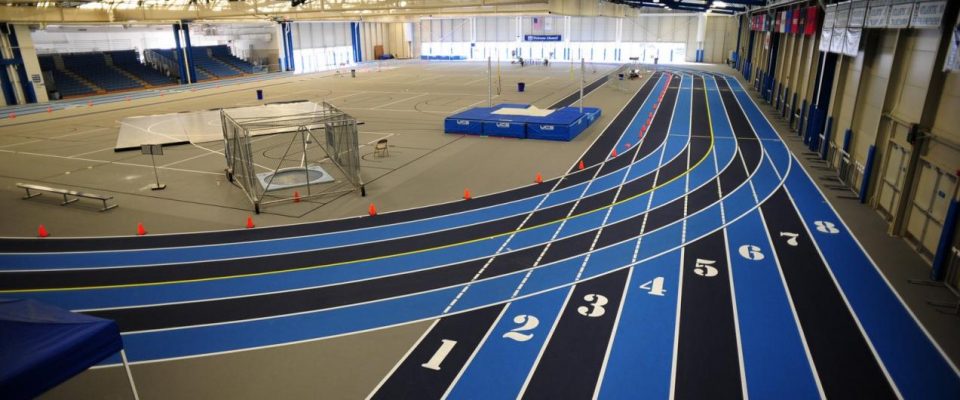Indoor track training tips and tricks
Training smart this winter on the indoor track

— by Kevin Mackinnon, TMC Editor
More and more of the sport’s elite are spending an increasing amount of their training time indoors. In Canada, that often makes even more sense during the winter months, when snow and ice, not to mention the cold temperatures, can make training outside an ordeal.
Competitive runners are no strangers to spending some of their winter training time indoors, often doing two or three workouts on an indoor track. Typically 200 m long, half the distance of a classic outdoor track (there are a few 400 m indoor tracks in Canada, but they are rare), indoor track training, done in moderation and with some care, can be a useful tool for triathletes looking to improve their running.
Why head indoors?
Apart from the obvious “get out of the cold and avoid the snow for some decent speedwork” answer to this question, indoor training can provide some useful technical benefits for triathletes looking to get faster. Running fast is all about turnover – you only actually move forward when your foot is touching the ground – and the shorter 200 m track and the tight turns will force you to work on that part of your running stride. Like a treadmill or bike trainer, you’ll also enjoy a controlled environment without any wind or other elements to deal with during your workout.
Those tight corners can also be a detriment for indoor training, leading to various overuse injuries if you’re not careful. I don’t like to have the triathletes I coach on the indoor track (or the outdoor track, for that matter) more than once a week and also ensure that we build into the sessions very gradually to avoid injury.
Rules of the game
Just as it’s important to follow lane etiquette in the pool, it’s really important that you keep these general track-training rules in mind as you head indoors for a workout:
1. Run in the correct lane, at the correct time
Most indoor tracks will have set times for clubs or teams, so make sure you check that you are allowed to be on the track when you’re planning on doing your run. Competitive track and field athletes will fly through their interval sessions, often in spikes, so you don’t want to be in the wrong place at the wrong time. You especially don’t want to be “that” runner who got in the way of someone’s workout. (Picture trying to do a hard bike set on a bike path full of cruiser bikes.) Competitive track running will always be done in a counter-clockwise direction, but some tracks will switch to a clockwise direction to reduce the stress on one side of the body for regular participants.
2. Look before you cross and start
Those fast track runners can be moving much faster than you think, so make sure you have a look before you cross the track to make sure no one is coming your way. As you are starting your interval or run, make sure you have a good look behind to ensure that no one is doing an interval and running up behind you.
3. Run in the appropriate lane
Some tracks will designate different lanes for different speeds. Often the outer lanes of the track will be for faster running as those lanes aren’t as tight in the corners and thus more gentle on the joints. Some tracks will have an outer lane for warming up – make sure you use that for your easy running before you start your workout.
4. Stay to the inside
When you’re doing your set, remember to stay to the inside of the lane. Faster runners will assume that you’re going to stay there and run around you. The worst thing you can do to a fast-moving trackie is move to the outside of the lane as they rapidly approach you, despite the fact that you might think you’re being nice.
5. Do a shoulder check before coming off the track
As you’re finishing an interval and want to move to the infield to take a break, have a quick look to make sure no one is coming up behind you. (Yes, I know they’re supposed to pass on the outside, but sometimes people are not paying attention or might be also finishing their set and moving inside, too.)
Workouts
The sky is the limit when it comes to creating indoor workouts. Here are a few basic sets that will get you started:
200S/ 400S
One loop around the track might seem like an awfully short interval set for a triathlete, but I love this distance as a way to work on your bottom end speed. To ensure that people aren’t pushing too hard and trying to run too fast (thus being more susceptible to injury), I like to do these intervals with a short recovery, making this a great set for working on your anaerobic threshold. So, a typical set might consist of blocks of 4 x 200 m intervals with a short recovery (15 to 30 seconds). We do a 200 to 400 m jog in between sets and then repeat anywhere from three to five more times. You can do a similar type set doubling the distance to 400 m intervals and repeating one or two more times.
Ladder set
A classic ladder set on the track can also be a great way to work on your pacing. You start with a 200 m interval at your goal pace. After a short break, do 400 m at the same pace. Then 600, 800 and 1,000 m intervals, all holding the same pace.
So, if you’re looking for something a bit different this winter that will be both fun and offer a chance to work on your run splits next summer, give an indoor track a try. You might find it will be just the trick to get your legs moving and allow you to nail the final leg of your next triathlon.
In addition to being the editor of Triathlon Magazine Canada, Kevin Mackinnon has been coaching track and field athletes for more than 20 years.

